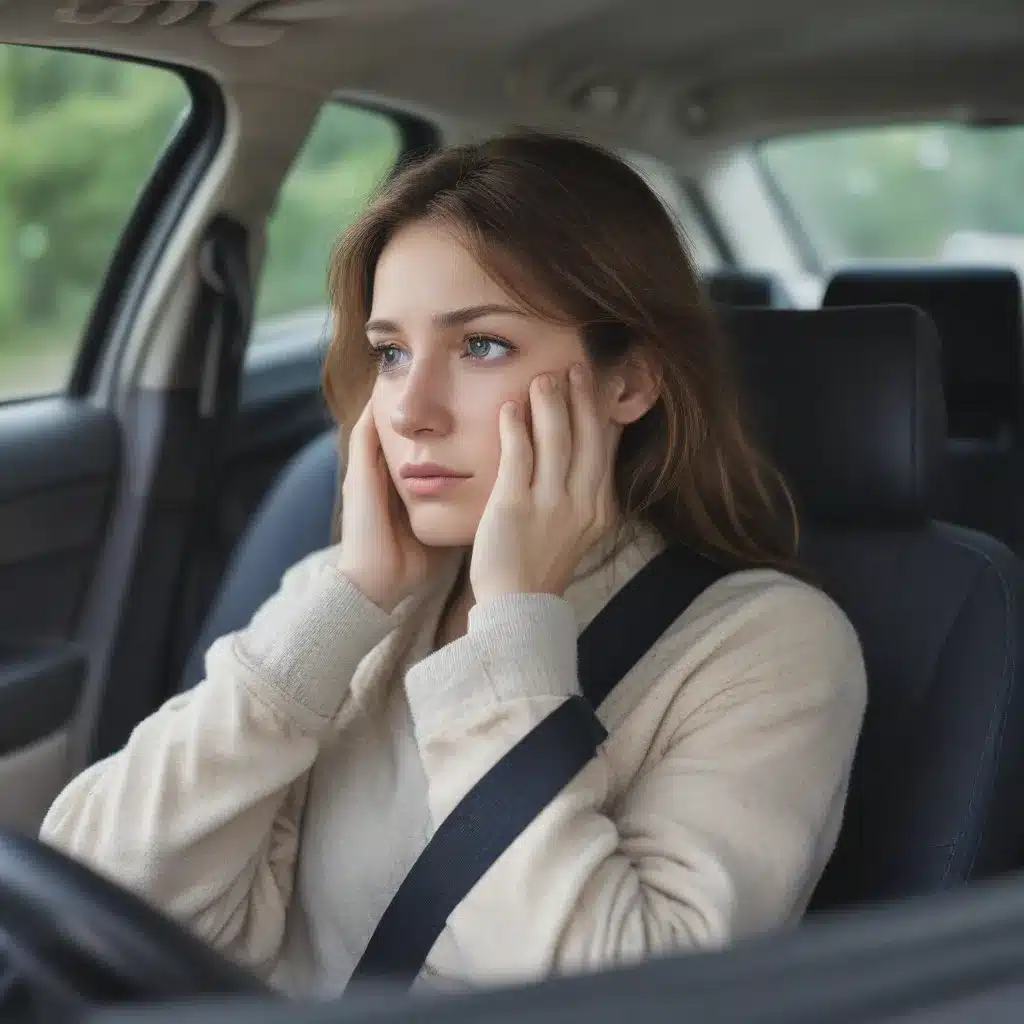
The Pup Who Couldn’t Ride
Rover was a happy-go-lucky pup who loved going on adventures with his family. Every time they packed up the car to head to the park or visit grandma, Rover would get all excited, wagging his tail and bouncing around. But as soon as the car started moving, poor Rover’s excitement would turn to distress. Within minutes, he’d start panting, drooling, and looking absolutely miserable. Sometimes he’d even vomit all over the backseat.
My heart broke watching Rover go through this every time we went for a drive. I wanted so badly to find a way to help him overcome his car sickness. After all, being able to ride calmly in the car is essential for any pup who wants to join their humans on fun outings. I knew I had to do something.
Understanding the Causes of Car Sickness
To help Rover, I first needed to understand why some dogs (and even humans!) experience motion sickness in the car. Turns out, it all comes down to a mismatch between what our senses are telling us.
You see, when we’re in a moving vehicle, our inner ear (which controls our sense of balance) is detecting the motion, but our eyes are seeing a stationary interior. This creates a conflict between what our vestibular system (inner ear) and our visual system (eyes) are perceiving. Our brain gets confused, and this confusion triggers the nausea and discomfort we associate with car sickness.
Certain factors can make some pups more prone to this sensory mismatch. Younger dogs, especially those between 6-12 months old, tend to be more susceptible, as do female dogs. There may even be a genetic component, with some pups inheriting a higher sensitivity to motion.
So in Rover’s case, his young age and male-female dynamic likely played a role in his severe car sickness. But the good news is, there are ways we can help dogs like him overcome this unpleasant experience.
Gradual Exposure: The Key to Conquering Car Sickness
The most effective approach for curing car sickness is through a process called gradual exposure. The idea is to slowly and systematically introduce your pup to being in the car, allowing them to get comfortable with the sensations before taking longer rides.
I started by simply having Rover sit in the parked car with me, offering lots of praise and treats. Once he was calm and relaxed in that environment, I’d turn on the engine for short periods, gradually increasing the duration over several sessions. The key was to never push him beyond his comfort level – if he started showing signs of stress, I’d immediately turn off the car and end the session on a positive note.
After a few weeks of this gentle conditioning, I noticed Rover seemed much less anxious when we got in the car. I decided it was time to take him on a very short drive around the block. To my delight, he made it the whole way without getting sick! We celebrated with extra cuddles and his favorite chew toy.
I Have Dogs recommends gradually increasing the length and complexity of car rides, always being mindful of your pup’s reactions. Some dogs may need to start with just sitting in the car, then progress to short loops around the neighborhood, before eventually handling longer trips. The key is to let your pup set the pace and never force them beyond their comfort zone.
Beyond Gradual Exposure: Other Helpful Strategies
While gradual exposure is the foundation for curing car sickness, there are a few other techniques you can try to further help your pup:
Create a Calming Environment: Make the car a pleasant, comfortable place for your dog. Use their favorite bed or blanket, play soothing music, and offer tasty treats to associate the car with good things.
Consider Supplements: Some pet owners have had success using natural remedies like ginger or peppermint oil to help settle their dog’s stomach. Always consult your vet before trying any supplements.
Medication as a Last Resort: In severe cases, your veterinarian may recommend an anti-nausea medication to help your pup through the initial stages of desensitization. But the goal should be to eventually wean them off any drugs.
Distract with Training: Keeping your dog’s mind occupied can also help minimize motion sickness. Try teaching new commands or practicing old favorites during car rides.
With patience and persistence, I’m happy to report that Rover is now a seasoned traveler. He bounds into the car without a second thought and enjoys the ride, no longer plagued by that horrible nausea. It’s so rewarding to see him finally able to join us on all our adventures.
If your own pup struggles with car sickness, don’t lose hope. By understanding the root causes and implementing a gradual exposure program, you too can cure that unsettling condition and give your furry friend the freedom to explore the world by your side.

